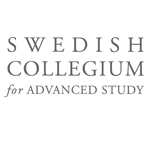Wendelin Reich
Pro Futura Scientia Fellow, SCAS.
Associate Professor of Social Psychology, Uppsala University
Wendelin Reich received a Ph.D. from Uppsala University in 2003, and he is currently Associate
Professor of Social Psychology at the same university. In recent years, Reich has served as
Visiting Professor at the Center for Cognitive Science, University of Turin (2011), and been
a Fellow at the Center for Advanced Study in the Behavioral Sciences, Stanford University
(class of 2012).
His main area of research is pragmatics (the study of communicative interaction), which is a
field that draws equally on linguistics, philosophy, social psychology, and artificial intelligence.
Among Reich’s recent contributions are “The Cooperative Nature of Communicative Acts”
(Journal of Pragmatics, 2011) and “Toward a Computational Model of ‘Context’” (Proceedings
of the Association for the Advancement of Artificial Intelligence 2011 Spring Symposia).
Following his dissertation, Reich developed an alternative to speech act theory that coheres
better with cognitive research on how the brain processes information - communicative signals
in particular - and evolutionary research on how interaction by means of communicative acts
may have evolved in genus Homo. The chief problem with speech act theory, he argues, is
its ignorance of context. Both cognitive neuroscience and evolutionary psychology predict
that comprehension of communicative acts was evolutionarily selected to exploit context in a
computationally efficient manner.
Over the past four years, Reich has given this line of research a technical twist. He has
worked on a computational model of the comprehension of simple communicative acts
(gestures, utterances) in situations of task collaboration. The main difference to other
approaches is that this model incorporates the aforementioned improvements to speech act
theory, as well as a cognitively grounded model of context.
During his time as Pro Futura Scientia Fellow, Reich will be working on the Haifield system,
which provides a test bed for communication-based human-agent interaction. Collaboration
partners include Cliff Nass of Stanford as well as several robotics companies and non-profits
in the Silicon Valley.
This information is accurate as of the academic year 2014-15.






